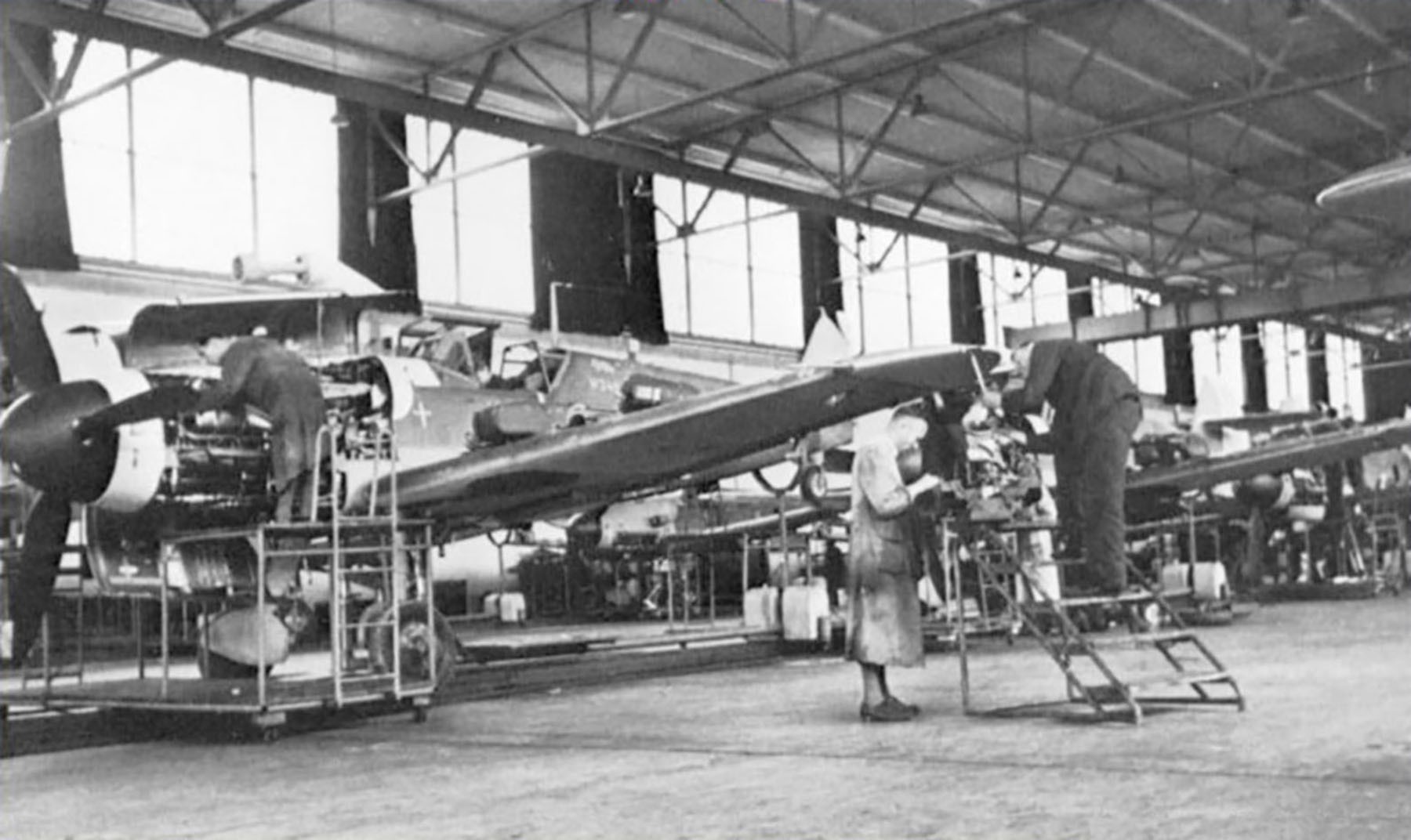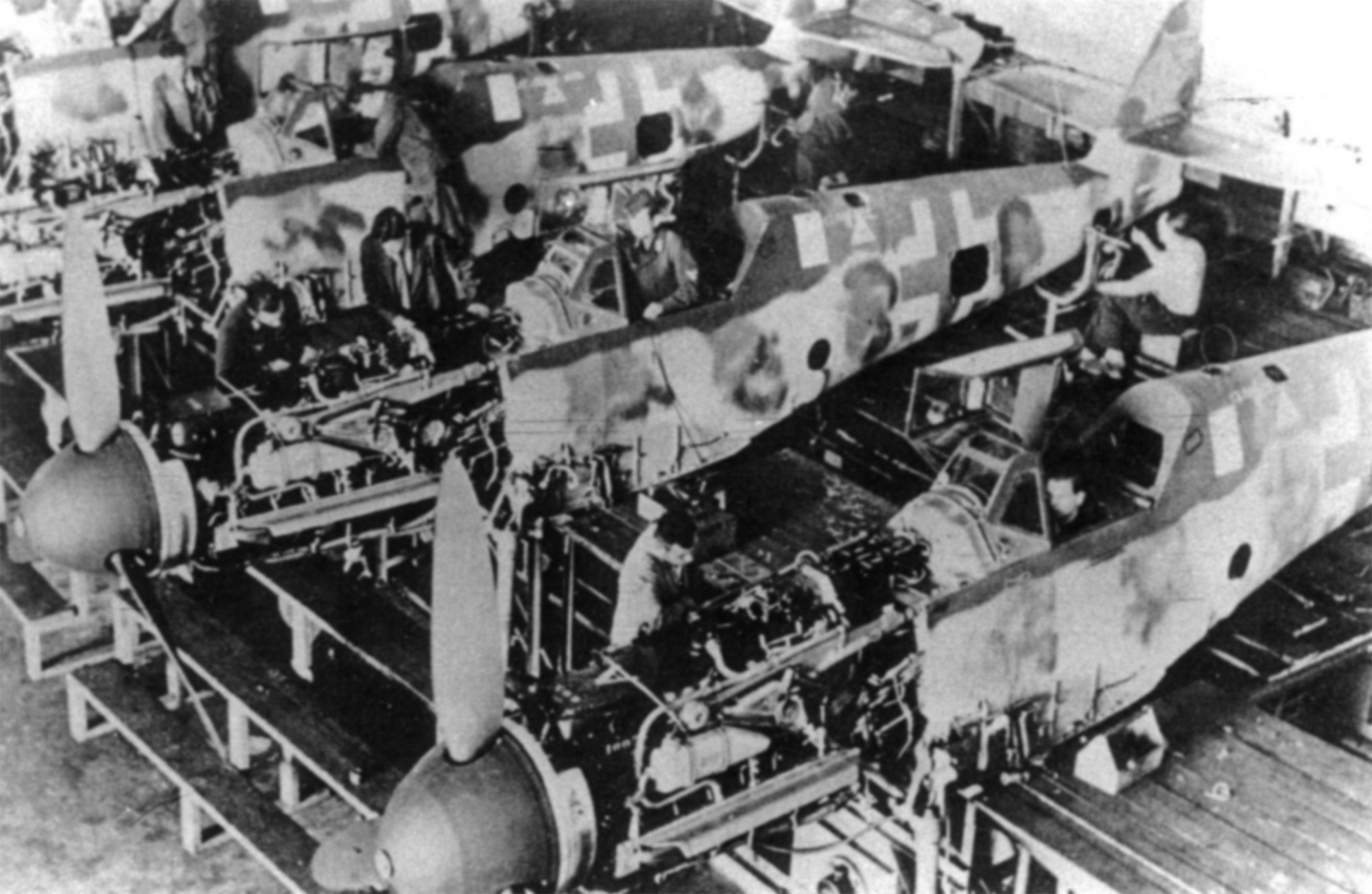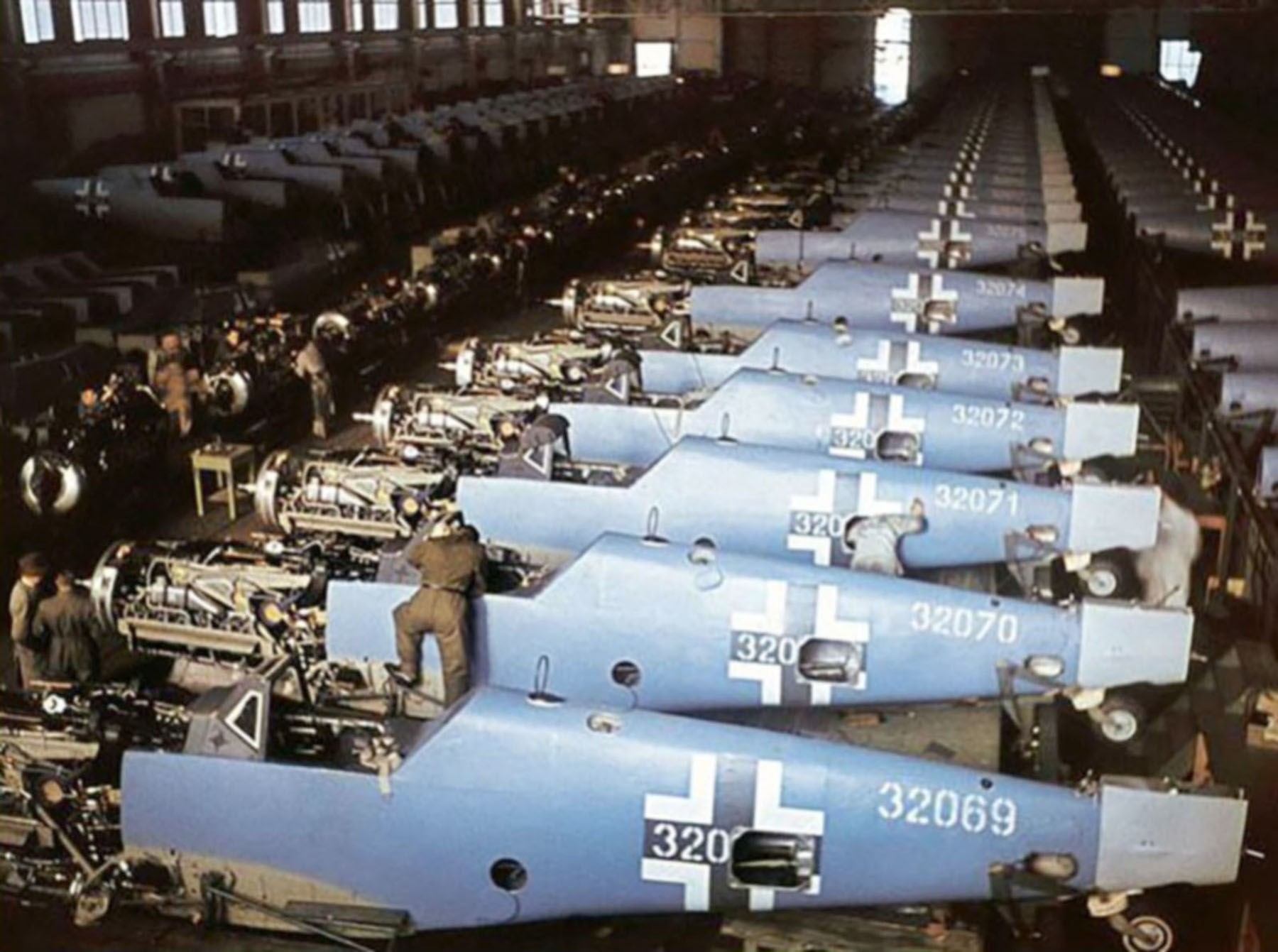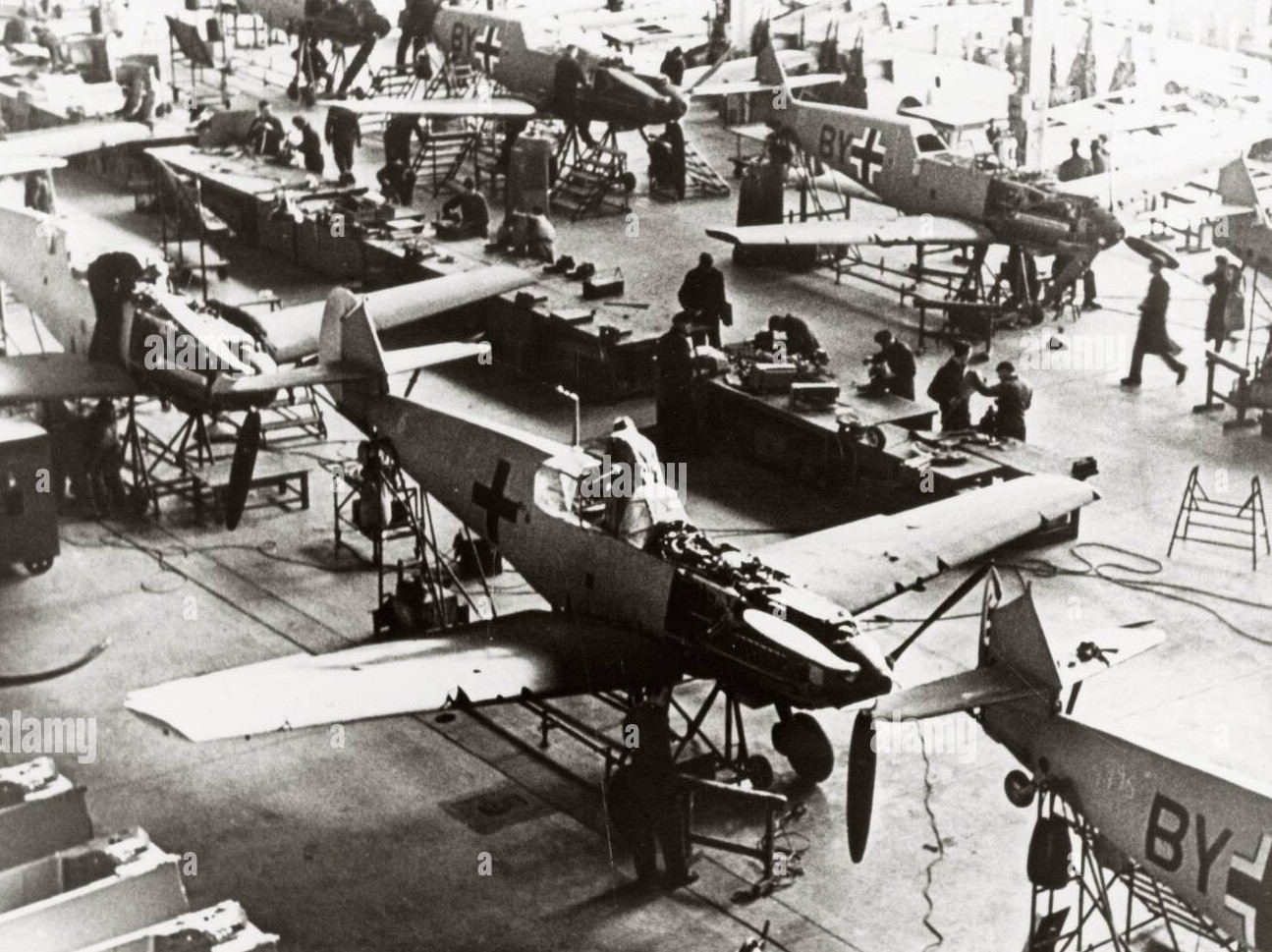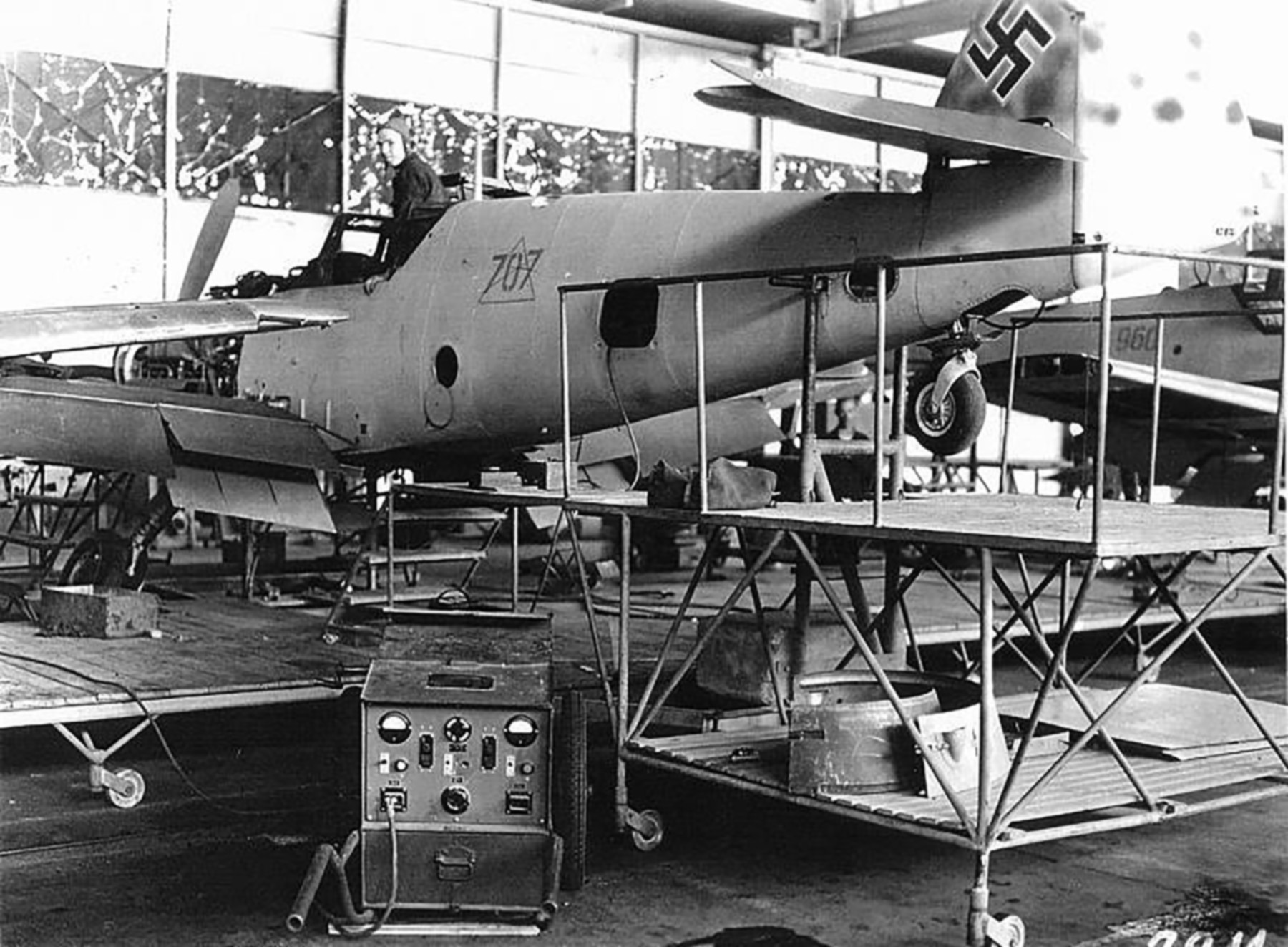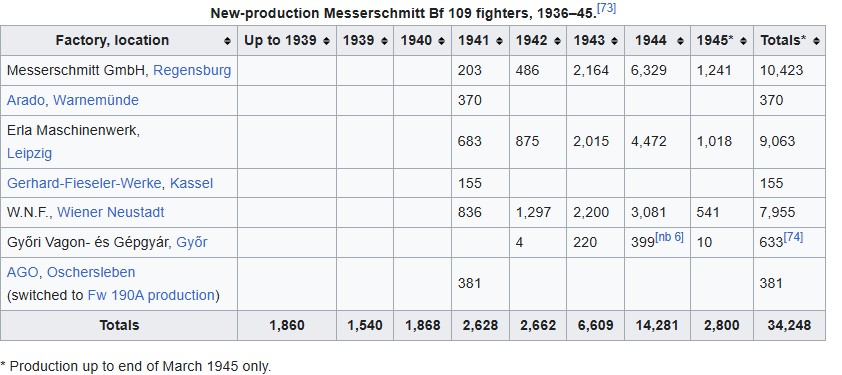
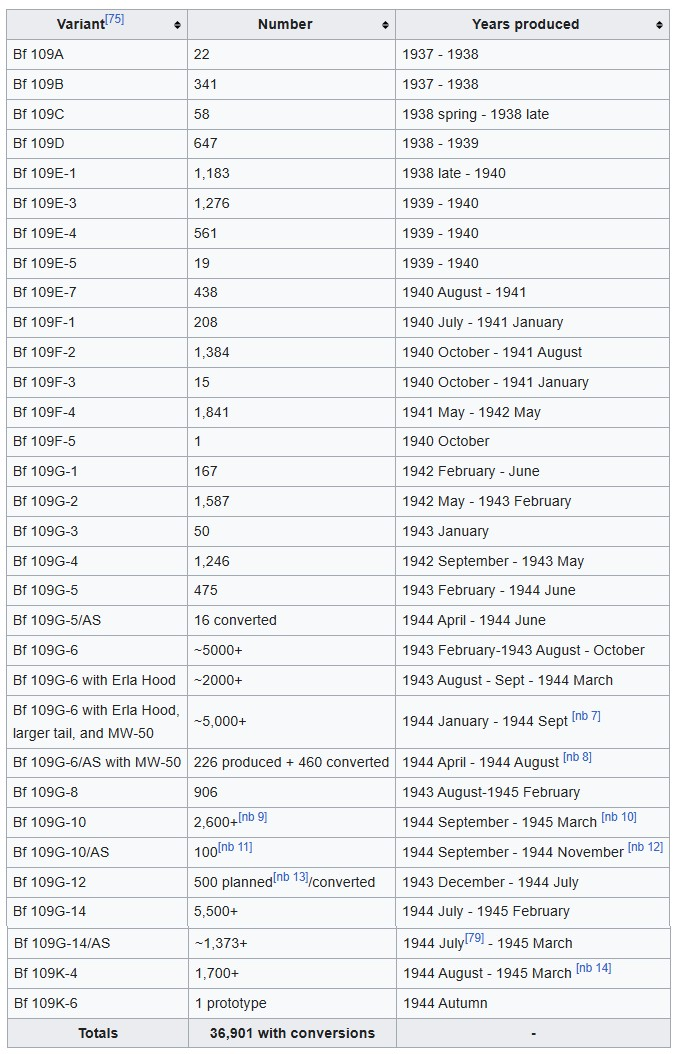
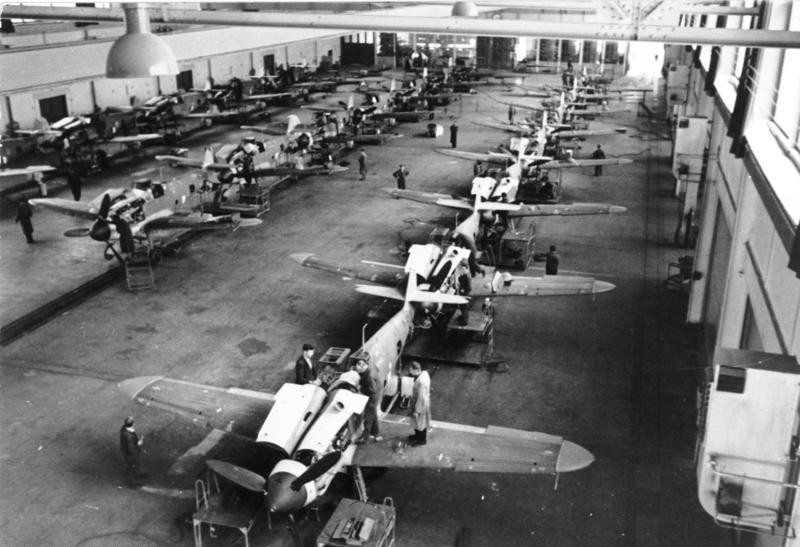
Total Bf 109 production was 33,984 units; wartime production (September 1939 to May 1945) was 30,573 units. Fighter production totalled 47% of all German aircraft production, and the Bf 109 accounted for 57% of all German fighter types produced. A total of 2,193 Bf 109 A–E was built prewar, from 1936 to August 1939.
In January 1943, as part of an effort to increase fighter production, Messerschmitt licensed an SS-owned company, DEST, to manufacture Bf 109 parts at Flossenbürg concentration camp. Messerschmitt provided skilled technicians, raw materials, and tools and the SS provided prisoners, in a deal that proved highly profitable for both parties. Production at Flossenbürg started in February. The number of prisoners working for Messerschmitt increased greatly after the bombing of Messerschmitt's Regensburg plant on 17 August 1943. Erla, a subcontractor of Messerschmitt, established Flossenbürg subcamps to support its production: a subcamp at Johanngeorgenstadt, established in December 1943, to produce tailplanes for the Bf 109, and another subcamp at Mülsen-St. Micheln which produced Bf 109 wings, in January 1944.The Flossenbürg camp system had become a key supplier of Bf 109 parts by February 1944, when Messerschmitt's Regensburg plant was bombed again during "Big Week". Increased production at Flossenbürg was essential to restoring production in the aftermath of the attacks.
The Austrian resistance group, led by Heinrich Maier, very successfully passed on plans and production facilities in the Austrian area for Messerschmitt Bf 109 to the Allies from 1943. With the location of the production sites, the Allied bombers were able to attempt "precise" air strikes.
After the August 1943 Regensburg raid, some Bf 109 production was relocated to Gusen concentration camp in Austria, where the average prisoner's life expectancy was six months. In order to make the new production facilities bomb-proof, other prisoners were forced to build tunnels so that production could be relocated underground. Many died while performing this hazardous duty. By mid-1944, more than a third of the production at the Regensburg factory originated in Flossenbürg and Gusen alone; only the final assembly was done in Regensburg. Separately, Erla employed thousands of concentration camp prisoners at Buchenwald on 109 production. Forced labor at Buchenwald produced approximately 300 Bf 109 fuselages, tail sections, and wings before the end of the war.
Some 865 Bf 109G derivatives were manufactured postwar under licence as Czechoslovak-built Avia S-99 and S-199s, with the production ending in 1948. Production of the Spanish-built Hispano Aviación HA-1109 and HA-1112 Buchons ended in 1958.[
